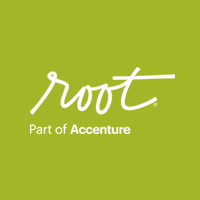Think about those New Year’s resolutions. You’re on track for a few weeks, but then it’s back to work and the daily grind — and what happens ? If you’re like most, it fails. Eighty percent of all New Year’s resolutions will fail by the second week of February, according to U.S. News & World Report.
Even with a clear goal established and the capability to achieve it, why can’t you stick to your resolution?
From Resolutions to Workplace Change, Sustainment Isn’t Prioritized
Resolutions are a little like organizational change initiatives — for instance, strategy rollouts, customer experience efforts, or technology transformations. Have you ever embarked on a change effort, developed the communication, created the rollout experiences, and engaged your people to build momentum, only to find a few weeks later that it’s back to the status quo? Why does this happen?
The answer: Sustainment wasn’t prioritized. It takes a lot of energy to initiate change, and sustainment is often pushed aside as something to deal with later. Beyond that, as well intentioned as your people may be, they are busy. They’re pulled in multiple directions. They may have tried to change but became frustrated when they did not immediately see results. Or maybe they’ve just moved on to the next big initiative.
Sustainment is just as important as the change initiative itself! You see, our brains are wired to forget. Our brains are trying to forget. Forgetting isn’t a failure of the brain. Instead, it’s your brain tidying up — cleaning out old information to make space for new memories. People forget about 90% of the information they have learned within a week of learning it, according to Art Kohn, a professor and consultant in corporate training and performance improvement.
Furthermore, more recent studies have shown that retrieval, or accessing a memory, is critical for learning. Jeffrey Karpicke, PhD writes “Every time a memory is retrieved, that memory becomes more accessible in the future.
If not sustained, you’re leaving change to chance. You may be inadvertently signaling to your people’s brains that the change wasn’t more important than other things happening in their world, and that they should clear some space in their heads for bracketology this March instead.
Four Tips to Make Sustainment a Reality
Change is only as effective as its sustainment effort. The good news is that with a little planning, sustainment is not that hard to prioritize. Sustainment can’t be an afterthought either, though — you need to get people thinking about it, talking about it, doing something with it, and breaking down barriers. With a consistent approach, you can help make change stick.
We’ve studied what happens when change sticks and when it doesn’t. And we love to simplify the complex. When we see change stick, we consistently see four things have happened.
- There is a strong emotional connection. Authentically share why the change is happening and help people engage in the change.
- There is clear understanding. Transfer knowledge and ensure your people are recalling it and talking about it after the change has been rolled out.
- There are relevant behavioral examples. Model behaviors and ensure your people are practicing and applying them.
- There is social reinforcement. Adjust processes and express gratitude.
This year, my New Year’s resolution is to help your change initiative stick. With the help of my friends at Root, we’ll be publishing a series of posts about each of these four key success factors to sustaining change.
The Nerd Herd is the nickname of our talented Learning Design Team at Root. We are a team of experienced designers and developers with expertise in learning, communication, media, and technology. Throughout the year, The Nerd Herd will publish a series of thought-provoking and actionable posts. This piece was written by The Nerd Herd’s John Findling.






